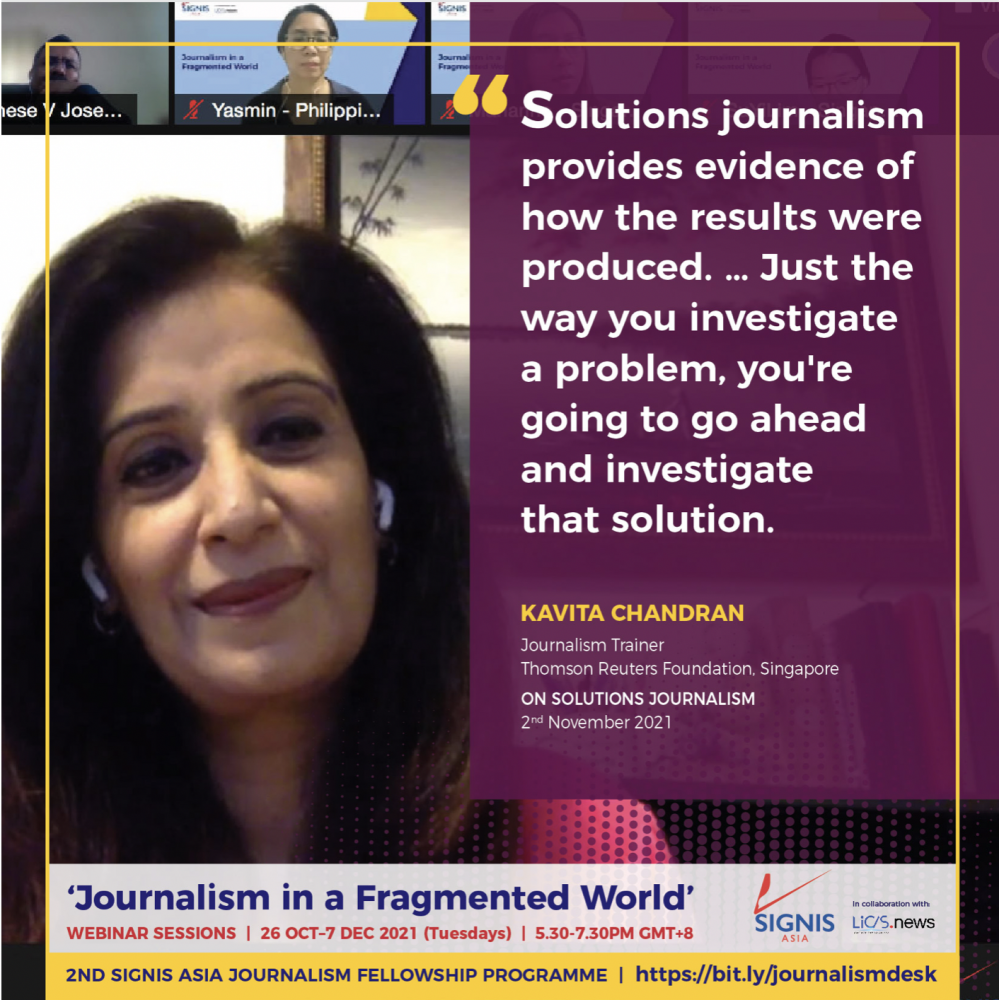Covering tragedy and disaster is on the plate of many journalists, especially if they’re based in the developing world.
But solutions can shine through the turmoil. Kavita Chandran, a consultant and journalism trainer at the Thomson Reuters Foundation in Singapore, believes that timing is key.
“It doesn’t mean that if there is news breaking, there’s a bomb blast happening, there’s floods happening, that you go looking for a solution at that point,” Chandran said.
“Breaking news is breaking news. A news feature is solutions journalism. When the dust settles and you go and find someone who’s making a difference and providing a solution… that is another story, a follow-up news story that you can do, to fight problem stories that you did about that particular incident.”
Chandran was addressing 25 participants at a recent webinar organised by the SIGNIS Asia Journalism Desk.
Chandran, an industry veteran who has worked at international news outlets including CNBC and Bloomberg, now spends her time training professional journalists at Reuters foundation.
She makes sure to push for solutions journalism, “largely because today’s world needs more positive news than negative.”
“I think we all are all sick and tired of negative news, and our profession has also made us quite cynical as we’ve gone along,” she quipped.
The numbers support her sentiment. A 2019 Reuters study on news fatigue found that more people were avoiding news around the world.
Some 58% of participants said that news negatively impacted their mood. Meanwhile, 40% said they didn’t feel they could do anything about negative news.
Readers are responding positively to positive news. Chandran noted that The New York Times has created a section titled ‘Fixes’. BBC has ‘People Fixing the World’. The Boston Globe has ‘Things That Work’, while The Guardian has ‘The Upside’.
“We’re talking about big newsrooms that have realised that money is coming in from all these impressions and views and clickthroughs we are getting, because readership has increased for positive news,” she said.
Still, the future of journalism will likely differ from what many professionals are comfortable with.
While teaching a course at a university, Chandran learned that most of her students got their news from TikTok and Instagram. Adapting to these needs is crucial for the survival of newsrooms.
However good old-fashioned journalism – which has investigation as its centerpiece – has its place even with young audiences, Chandran believes.
“There are always limitations to a solution-based approach, whether it’s an NGO that’s trying to tackle climate change, whether it’s a startup who is providing some sort of agri-technology for a remote (community).
“Find out what is the limitation? What still needs to be improved? In other words, you are investigating that solution,” she said.


